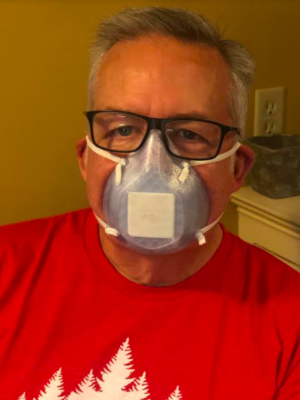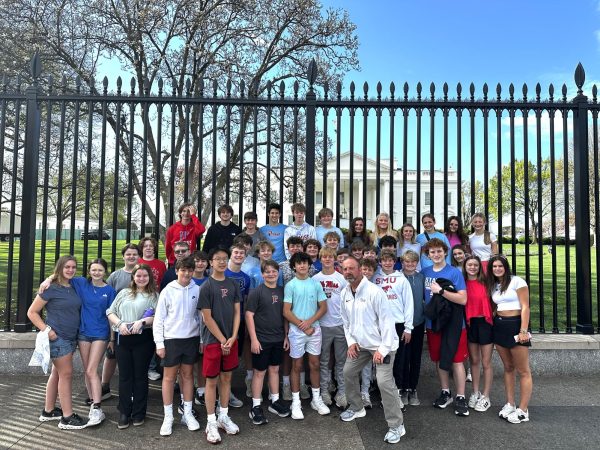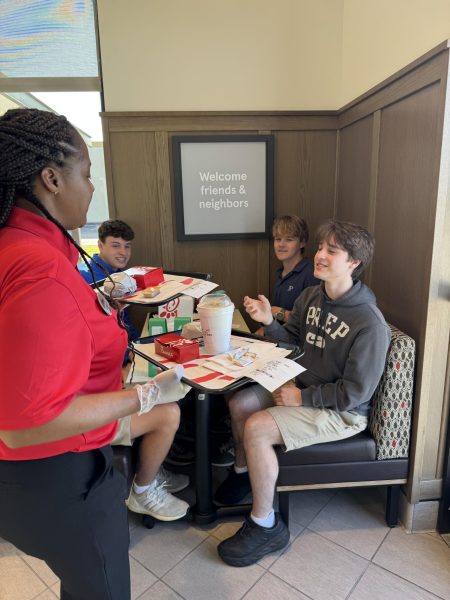Mask-making lets people take a stand against virus

Fabric and a plan are all you need to make protective masks. A sewing machine can help as well.
Around the country people have started to make cloth mask coverings in response to the coronavirus outbreak. Some make them for personal use while others send them to hospitals. The ones sent to hospitals can be worn by patients and nonclinical staff. Also, these cloth masks can be worn over N95 respirator masks in hopes of prolonging the functionality and protection the N95 offers.
According to the Centers for Disease Control and Prevention, or the CDC, the respirators on N95 respirators filter about 95 percent of particles from the air, reducing the chances of the wearer being exposed to airborne particles. N95 masks are certified by the CDC and NIOSH, the National Institute for Occupational Safety and Health. Doctors and nurses wear these in hopes of not catching the coronavirus from patients they treat.
The homemade masks can be used in replacement of regular surgical masks worn on daily occasions. A surgical mask is looser fitting than a N95 respirator and it creates a physical barrier between the mouth and nose of the wearer. A seal does not form around the mouth like a N95 does. Surgical masks are in short supply and by using homemade masks health care providers can save the influential N95 respirator masks, which are also dwindling in supply, for critical situations. The COVID-19 pandemic happened so quickly that the United States healthcare system did not have time to prepare for the surge of patients in hospitals.
The CDC has warned that the protection of airborne sickness by cloth masks is not known and people should not solely depend on them for protection against COVID-19. The CDC is continuing to preach social distancing and self quarantining to flatten the curve and prevent the spread of the coronavirus.
The CDC and NIOSH have both warned that homemade masks might have to be used in place of surgical masks during urgent situations. NIOSH said, “In settings where N95 respirators are so limited that routinely practiced standards of care for wearing N95 respirators and equivalent or higher level of protection respirators are no longer possible, and surgical masks are not available, as a last resort, it may be necessary for HCP, healthcare professional, to use masks that have never been evaluated or approved by NIOSH or homemade masks.”
NIOSH went on to suggest that these masks could be used to care for patients with COVID-19, tuberculosis, measles, and varicella. Both the CDC and NIOSH concluded that caution should be exercised when considering the option of wearing homemade masks. However, wearing a homemade mask helps prevent people from touching their face which helps limit the spread of the coronavirus.
Making homemade cloth masks is a great way to get involved in fighting COVID-19 and helping our nation. Also, it’s a fun activity to either do with your family or on your own. Recently, my mother and I sewed cloth masks together to send to my grandparents. It was a great bonding experience and I helped provide protection for my grandparents.
We followed a detailed video of instructions on sewing a homemade mask on the website sewingforlives.com. The organization, Sewing For Lives, was started by Megan Jansen, an ICU nurse in Salt Lake City, Utah. The goal of this organization and many other individuals who make masks for our health care providers is to protect the people who protect us. These men and women are fighting coronavirus on the frontline and need our support.








